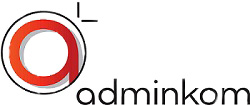Printer Market and Printing Volume Trend in Indonesia 2026
Indonesia’s Printer Market Trend 2026
Based on available IDC insights and related market research sources, the Indonesia printer market is expected to continue its growth trajectory between 2026 and 2030, driven by both traditional and digital printing segments. Here is a detailed breakdown:
-
Market Segmentation
By Device Type
- Inkjet Printers: Continue to dominate small-business and home-office segments due to cost-efficiency and ease of use.
- Laser Printers: Strong adoption in office environments, especially for high-volume document printing, though growth will be constrained by digitalization trends.
- Multifunction Printers (MFPs): Expected to maintain a leading share (historically ~60.7% of market in 2024) due to consolidation of printing, scanning, copying, and fax functions in hybrid workplaces.
- Large-format Printers and Industrial Printers: Fastest growth anticipated in packaging, advertising, and textile printing sectors.
By Technology
- Inkjet & Thermal: Inkjet remains dominant (~48.6% market share in 2024), while thermal printing grows fastest, driven by e-commerce, logistics labels, and industrial traceability.
- UV and Latex Digital Printers: Increasing adoption in large-format applications, packaging, and textiles.
By Application
- Commercial Offices & SMEs: Stable demand for multifunction and laser printers.
- Industrial/Packaging: Growth in label and packaging printing, direct-to-garment, and industrial textile applications.
- Advertising & Large-format: Expansion driven by outdoor advertising and branding.
- Market Drivers
- E-commerce Expansion: Sustained need for parcel labels and packaging supports thermal printer adoption.
- Personalized and On-Demand Printing: Growth in textile, promotional items, and custom packaging.
- Government and Enterprise Projects: Procurement cycles for education, banking, and public sector projects boost office and industrial uptake.
- Technological Innovations: AI- and IoT-enabled printers for predictive maintenance and workflow automation.
- Market Restraints
High Initial Costs: Advanced digital printers can limit SME adoption.
- Competition from Traditional Printing: Offset and bulk printing remain cost-effective for large-volume runs.
- Supply Chain Issues: Components like ink and spare parts may temporarily constrain deployment.
- Digital Substitution: Paperless initiatives in enterprises slightly dampen growth in document-centric office printers.
- Regional Trends in Indonesia
- High Concentration in Urban Centers: Jakarta, Surabaya, and Bandung leading adoption.
- Industrial Expansion: Manufacturing hubs adopting industrial printers for packaging and textiles.
- Policy Influence: Domestic content regulations (TKDN) driving local sourcing and potential market shifts in 2026–2030.
- IDC Projection Overview (2026–2030)
- While IDC does not publicly disclose exact numerical projections for 2026–2030 in free sources, extrapolating from past trends and global regional growth (Asia-Pacific was 41.6% of revenue in 2024 with a CAGR ~5–6%):
- Indonesia Printer Market CAGR (2026–2030): Likely in the range of 5–6% annual growth.
- Revenue Growth Drivers: Multifunction and industrial digital printers, especially in packaging and logistics, leading revenue expansion.
- Emerging Opportunities: Digital textile printing, wide-format billboards, and UV/latex-based printing for advertising and branding.
- Market Composition by 2030:
- Multifunction and inkjet: Dominant in office/SME segment.
- Large-format, label & packaging: Fastest-growing industrial segment.
- Laser printers: Steady adoption, gradual share decline in mature segments due to decline in office document printing.
- Key Vendors
- Home & Office: Epson, Canon, HP, Brother.
- Industrial/VLS: Heidelberg, Ricoh, Toshiba Tec, OKI.
- IDC highlights ongoing vendor consolidation and focus on AI, automation, and sustainability initiatives.
- Strategic Insights
- SME & Midmarket Focus: Printers with low total cost of ownership and cloud/IoT integration will proliferate.
- Sustainability: Eco-labels, refillable inks, LED curing technology play a role in purchase decisions.
- Digital & Industrial Alignment: Adoption in e-commerce and industrial packaging critical to market expansion.
Conclusion
The Indonesia printer market from 2026 to 2030 is expected to grow steadily at ~5–6% CAGR, with industrial digital, large-format, and multifunction office printers as major drivers. E-commerce, personalized printing, and technological innovations (IoT/AI) are the key growth levers, while costs, digital substitution, and supply chain challenges may moderate adoption in some segments.
Sources & References:
- IDC Indonesia analyst reports,
- InfotechLead (2025),
- 6Wresearch (2024–2030),
- Mordor Intelligence (2025–2030),
- Statista Indonesia Printers & Copiers forecasts.
Indonesia's Printing Volume Trend in 2026
Market Forecast Overview:
According to market analyses (Statista and 6Wresearch), the printers and copiers market in Indonesia is projected to experience modest growth in 2026, reflecting broader digital transformation trends:
- Growth Rate: The volume of printers and copiers is expected to grow by 2.4% in 2026. This indicates a continued, albeit moderate, expansion of hardware deployment.
- Market Size Context:
- By 2029, the Indonesian market is expected to reach approximately 3.3 million units. Back-calculating suggested growth implies that printer volumes in 2026 will be roughly 2.8–3.0 million units, depending on precise year-on-year adoption.
Drivers of Growth:
- Digital Printing Adoption:
- The digital printing sector is expanding rapidly due to the rising demand for on-demand, short-run, and personalized printing, particularly across packaging, textiles, and commercial materials.
- Technological improvements in inkjet, electrophotographic, and laser printing increase efficiency and print quality.
- Commercial & Consumer Needs:
- Intensifying e-commerce activity drives demand for customized packaging and labels.
- Growth of home offices and small-medium enterprise (SME) adoption continues to support hardware sales.
- Technological and Regulatory Factors:
- Government initiatives promoting Industry 4.0 and smart manufacturing are encouraging digital printing adoption.
- Innovations like AI-driven workflow automation, cloud-based press management, and UV-curable inks are enhancing operational efficiency and sustainability.
Trend Implications for 2026:
- Moderate volume growth: The increase is steady but not explosive, at ~2.4% compared to 2025.
- Shift toward digital printing solutions: While overall printer units grow moderately, demand for digital and multifunctional printers is increasing faster than traditional hardware.
- Sustainability considerations: Eco-inks and recyclable substrates are influencing purchasing decisions, particularly for commercial printing purposes.
Conclusion:
In 2026, printer volumes in Indonesia will grow steadily, with a market expansion of roughly 2.4%, reflecting greater adoption in SMEs, the commercial sector, and digital printing transformation. The trend indicates a steady upward trajectory rather than large-scale jumps, with increasing emphasis on digital, sustainable, and automated printing technologies.
References:
- Statista Market Forecast – Printers & Copiers Indonesia
- 6Wresearch – Indonesia Printers Market 2020–2026
- MobilityForesights – Indonesia Digital Printing Market

